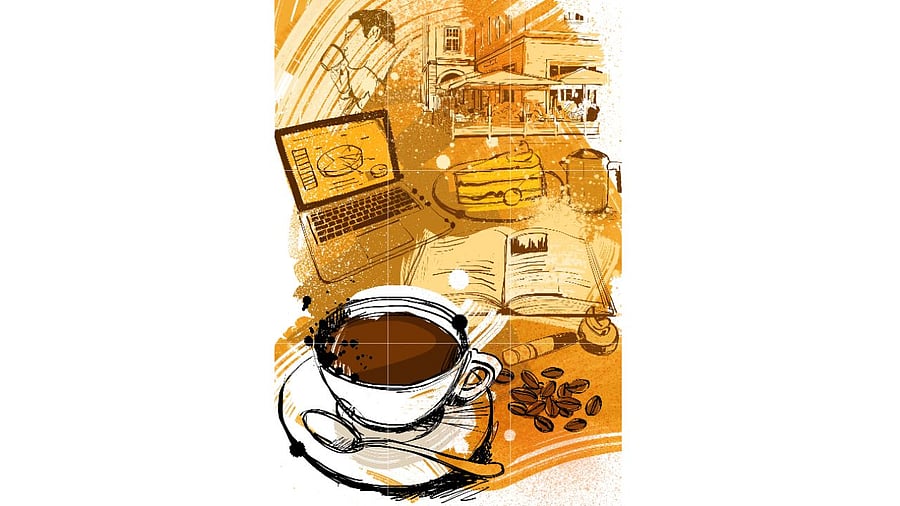
The art of slowing down with a cuppa...
Credit: Special Arrangement
Afternoons have an almost Pavlovian effect on me. When the clock strikes three, the neurons in my brain dimly light up. All roads lead to a steaming, swirling cup of coffee.
Reports estimate that approximately 2.25 billion cups of coffee are consumed worldwide daily. Clearly, there's nothing extraordinary in this daily routine of mine. And yet, every slow sip I take of my velvety, creamy cappuccino feels almost like an act of defiance.
In a world where caffeine is associated with productivity or energy (fun fact: it's now common to have a coffee rave, where people gather together in the wee hours of the morning and party alongside coffee instead of alcohol), I turn to coffee to slow down and drown out the sounds of the ever-ticking clock.
But this approach to coffee has taken a long time to brew. It needed both time and a cross-continental move, to be specific.
India, particularly the south, takes its filter coffee seriously. I've spent one too many evenings at work at a Darshini close by, watching in awe as the person behind the counter deftly keeps track of every order, every heavy pot of boiling milk, every request for extra sugar or extra strong (or light in my case) coffee. It was always trance-inducing to watch the dark, dirt-like decoction turn a rich chocolatey brown when milk was poured in. The first sip went straight to my heart and then to my deadline-frazzled brain. But all too soon, the little glass would be empty, and it was time to head back to the sharp white lights of the office.
The Swedes do this differently. Fika, as they call it, is as much a verb as a noun. A successful fika is sweet. Not just from the sugary cinnamon or cardamom bun that accompanies it as a rule. You see, the Swedes learned early on that coffee with some company is essential to stretch a moment. The drink here is incidental, the focus being an intentional pause to just be present, or to just be.
My first fika in Gothenburg gave me a taste of what I was missing out on. The table was crowded with cardamom knots, chocolate balls and cookies. Seconds turned into minutes, which then turned into an hour, and we lingered long after the coffee and every last pastry crumb was gone.
Work, clearly, could wait. There were finer things and fikas to be experienced in life. And I couldn't agree more.
Not long after, Germans taught me another way of slowing down with coffee. Afternoon ‘kaffes’ here are incomplete without their ‘kuchen’. To an Indian who grew up associating cake with dessert, it was initially strange seeing people around me enjoy coffee with generous slices of apfelstrudel (apple strudel), bienenstich (a honey, almond and custard-filled “bee sting” cake), or the famous schwarzwalder kirschtorte — a black forest cherry cake that is just as much a mouthful to pronounce as it is to greedily devour. Similar to fika, Bavaria’s kaffee und kuchen also has a strong social aspect connected to it: Kaffeeklatsch or coffee gossip. And everyone here knows, a good story can't be rushed.
If Germans enjoy their afternoon coffee with cake, Italians are the opposite. In Rome, it's not uncommon to see people order espressos after dinner. Besides the belief that the acidity in coffee can aid digestion, the drink also serves as a way to linger just a bit longer at the table.
From India to Italy, and Gothenburg to Germany, drinking coffee isn't just an unthinking force of habit. This small act takes on a whole new meaning, becoming both ritualistic and rhythmical in its daily repetition. Different countries have their versions of it, but they all agree: Coffee is more than caffeine.
So now, when the clock strikes three, I make my daily pilgrimage to a coffee machine, knowing that I don't know how to make time stand still. But I do know how to enjoy a cappuccino. For now, that is enough.